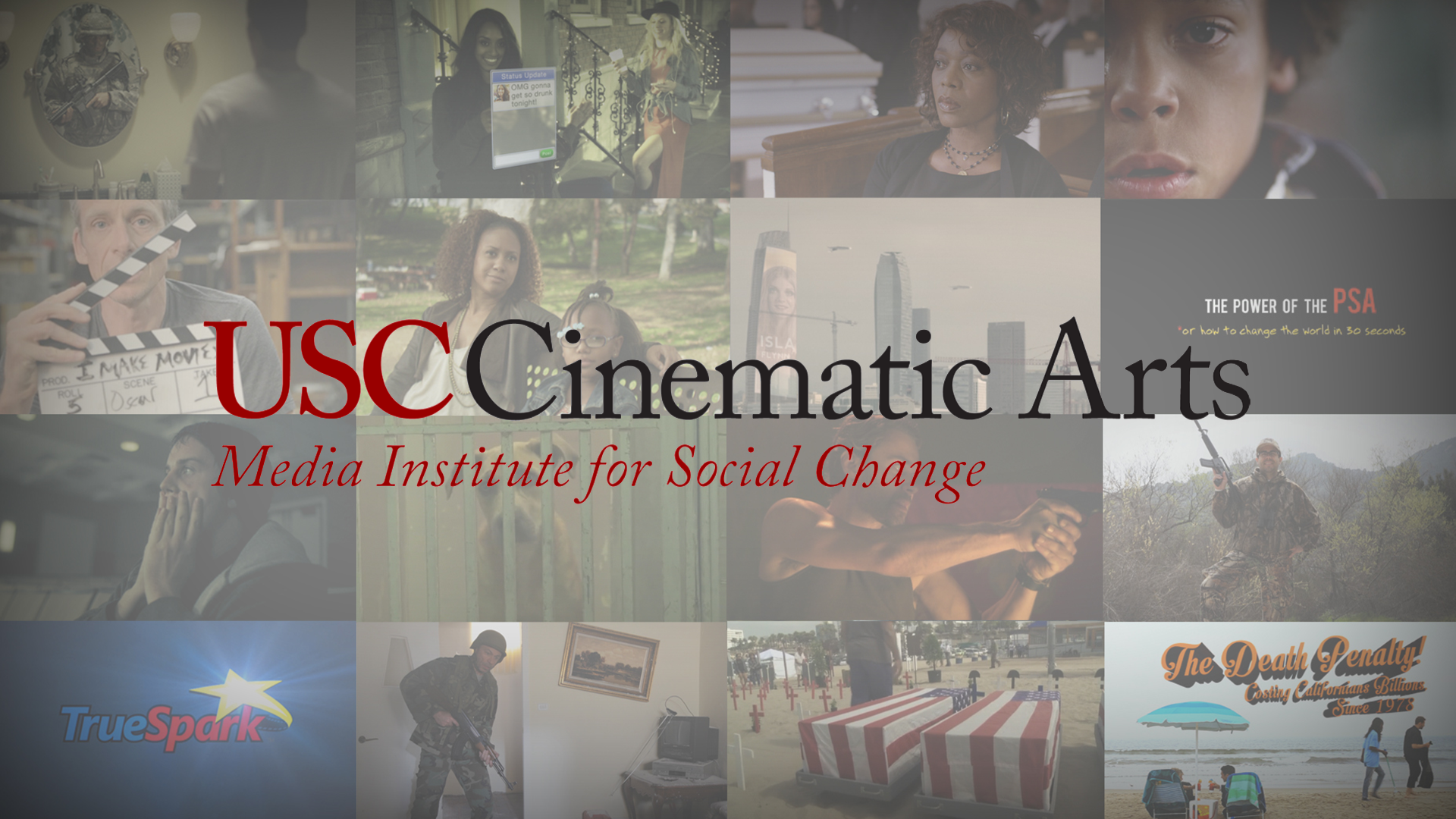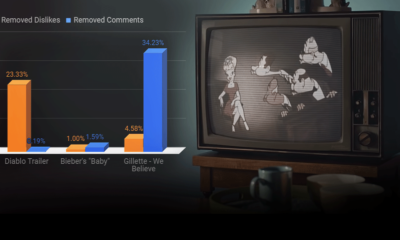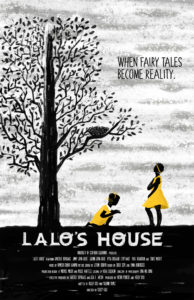Filmmakers
Lars Von Trier and His Leading Ladies

Lars von Trier, the “enfant terrible” of contemporary cinema, has grown a reputation for putting his female protagonists in harms way. Half of von Trier’s films star female protagonists, each of which encounter personal trauma such as humiliation, murder, rape, mental illness and depression.
The charge of misogyny, and the start of von Trier being known as a provocateur, began with Breaking the Waves (1996) – which won Cannes’ Grand Prix and brought the Danish director’s work to a global audience – when von Trier appeared, to some, to revel in the pain his women characters faced. This outrage climaxed with Antichrist’s (2009) infamous scene of its female protagonist snipping off her own clitoris.
However, Dogville (2003) brought on the shift in von Trier’s female protagonists – an Our Town-style allegory in which a tiny Colorado town agrees to hide Grace (Nicole Kidman) on the run from the mafia. First welcoming Grace but then eventually exploiting her dependent position the town slowly uses her as a scapegoat and slave – routinely raped and, after an escape attempt, then chained by the neck to a large iron wheel. Rather than continuing to labor under the increasingly foolhardy notion that the people of Dogville are goodhearted despite the way they persecute her, she seizes the opportunity to visit Old Testament-style retribution on them. As Judy Berman from Flavorwire so succinctly put it: “[Dogville is] a Pyrrhic victory, one that brings with it disturbing implications about group psychology and American culture, but it also marks the moment when von Trier’s heroines stopped being sacrificial lambs and started fighting their oppressors.”
Breaking the Waves (1996) was the first of von Trier’s Goldheart trilogy – inspired by the Danish fairy tale Golden Heart where a little girl ventures into the forest and gives away all her worldly possessions, down to the clothes on her back. The film’s protagonist Bess (Emily Watson), inspired by the Golden Heart children’s tale but taken to a much more dramatic degree, is driven to ‘sacrifice’ herself to save her quadriplegic husband. Within the story arc Bess’ new husband Jan (Stellan Skarsgård) becomes paralyzed by an oil rig accident – which both Bess and her God blame her for as Jan hangs between life and death. In between bouts of unconsciousness newlywed Bess is asked by Jan to engage in and then recount sexual relations with other men in order to keep him alive. The two subsequent films in von Trier’s Goldenheart trilogy – The Idiots (1998) and Dancer in the Dark (2000) – depict similar innocently made heroines offering themselves to save the people they love. Like Bess, Dancer in the Dark’s Selma meets with a tragic fate; in The Idiots, Karen’s (Bodil Jørgensen) suffering precedes her sacrifice.
Antichrist’s – the first installment in von Trier’s Depression trilogy – female protagonist, She (Charlotte Gainsbourg), embarks on a debilitating depression after her young son’s accidental death. She lashes out at both herself and her husband (Willem Dafoe) in the goriest possible way. The two subsequent films in the Depression trilogy also depict women with self-destructive impulses. Melancholia’s (2011) Justine (Kirsten Dunst), who tells her boss and (in subtler ways) new husband and family to go fuck themselves because she can’t keep swimming against the current of her brain chemistry – and of what she realizes about life on Earth – for their benefit; and finally, Joe (also played by Charlotte Gainsbourg) in Nymph()maniac remains stubbornly driven by her appetite for sex – which is really an appetite for transcendence, an uncompromising, essentially creative impulse that can be fed but never fully satisfied – despite its chaotic, destructive effects on her life and others’.
One can then trace the change in von Trier’s ladies first naïve, sacrificial lambs to fierce women who comprehend the futility of their martyrdom and chose to find transcendence on their own terms. However, some critics see this transcendence as fully operating within the ‘patricidal paradigm’ – a patriarchal culture in which males dominate – and that these female protagonists are still funding male power.
As Lindy West at Jezebel put it: “[Nymph()maniac] uses women’s bodies to create a spectacle… It’s counterproductive to disseminate the idea—for reasons not thoroughly justified—that hot teenage girls are roaming around train cars searching for penises to blow. Because what happens in real life is that teenage girls are roaming around train cars searching for safe seats to sit in so they can fucking get places without creepy dudes bothering them. There might be some artistic utility in flipping that truth, in exposing the emotional barrenness of that fantasy, but is it worth it? And is a male director the best person to do that job? And are naked, sexualized female bodies the most responsible tool to use?”
Alyda Faber from the Atlantic School of Theology argues: “Bess changes the object of her devotion from Word to flesh, but the terms of her devotion, and its funding of male power, does not change at all.” And Batya Ungar-Sargon from Tablet Magazine: “[T]o cast Joe’s appetite for sex, which is clearly explained by the film as an attempt to dull pain and recover self-esteem, as a search for transcendence… is to accept the film’s terms that a woman trying to please men sexually is the only form of transcendence open to women.”
I find that von Trier presents a woman as Judy Berman of Flavorwire does “a distinct, fully realized human being, defined not by her gender but by her intelligence and suffering.” And as Jessica Winter from Slate put it von Trier “couldn’t give an actress a standard ‘wife’ or ‘girlfriend’ role is his life depended on it.”
Von Trier makes no attempt to hide how strongly he identifies with his fully realized heroines – especially the recent ones. “My technique is that I divide my personality into the characters that I write, and then very early on they get a life of their own,” he told the New York Times. As Uma Thurman said in an interview with the Daily Beast: “[von Trier] is a very provocative filmmaker, but he writes women with more depth and respect and complexity than most writers,” she says. “The idea that people debate whether he’s a misogynist? People should debate whether people who don’t even write women are misogynist. The fact is, he’s dedicated a large portion of his artistic life to the exploration of the female psyche—good and bad, light and dark, shadows, textures. The fact that he’s dedicated a huge part of his talents to that, to me, defies the concept that he doesn’t have respect, interest, and genuine compassion in women. People should question writers that don’t even give a damn about a female character. They are the misogynists.”
In this sense, while von Trier’s work may not encompass an obviously feminist agenda, it might be said to present a radical space for thinking about how female characters are represented within contemporary works of film, and thus constitute a radical artistic endeavor. I believe that the dynamism presented in his leading ladies’ characters, as well as his identification with women and his heroines, proves von Trier to be a unique artist presenting us with a radical space for fully realized female protagonists. So, in all this discussions of von Trier’s possible misogynistic intents – whether you find his films to be terribly upsetting or positively fascinating – it is important to see and appreciate how complex these female characters are, even if there complexity comes from traumatic experiences.
Filmmakers
Out of the Basement: The Social Impact of ‘Parasite’

When Bong Joon-ho’s Parasite won multiple Oscars at this past weekend’s 92nd Academy Awards, the reaction was one of almost unanimous joy from the attendees and much of the American audience. Setting aside the remarkable achievement of a South Korean movie being the first to win Best Picture, this was due to the fact that so many people have been able to identify with Bong’s film, engaging in its central metaphor(s) in their own individual ways. Everyone from public school students to Chrissy Teigen have expressed their affection for the film on social media, proving that the movie has reached an impressively broad audience. The irony of these reactions is noting how each viewer sees themselves in the film without critique—those public school students find nothing wrong with the extreme lengths the movie’s poor family goes to, and wealthy celebrities praise the movie one minute while blithely discussing their personal excesses the next. Parasite is a film about class with a capital “C,” not a polemic but an honest and unflinching satire that targets everyone trapped within the bonds of capitalism.
Part of Parasite’s cleverness in its social commentary is how it depicts each class in such a way as to support the viewer’s inherent biases. If you’re in the middle-to-lower classes, you find the Kim’s crafty and charming, and echo their critiques of the Park’s obscene wealth and ignorance. If you’re a part of the upper class, you empathize with the Park’s juggling of responsibilities while indulging in their wealth, and have a natural suspicion toward (if not revulsion of) the poor. If you have a foot in both worlds, like housekeeper Moon-gwang and her husband Geun-sae, you can understand how the two of them wish to not upset the balance, so that they can secretly and quietly profit. All throughout Parasite, there’s a point of view to lock onto.
The point of the film is not to single out one of these groups as villainous, but to show how they’re part of a system that is the true source of evil. The movie has been criticized for lacking a person (or persons) to easily blame, which would of course be more comforting dramatically. Bong (along with co-writer Han Jin-won) instead makes the invisible systems of class and capitalism the true culprit, which is seen most prominently at the end of the film. All the characters are present at the same party, whether as hosts, guests, help, or uninvited crashers, and each class group suffers a mortal loss. It’s all part of the tension built throughout the movie coming to a head, yet there’s an inevitability to these deaths as well, a price each group inadvertently pays to keep the corrupt system they’re all a part of running. In this fashion, the movie is reminiscent of several works of dystopian fiction, such as Shirley Jackson’s “The Lottery,” and Aldous Huxley’s “Brave New World.” The film particularly recalls Ursula K. Le Guin’s short story “The Ones Who Walk Away from Omelas,” in which a utopian society is dependent on the continual torture and misery of a single child. Every system demands sacrifice, and Bong and Han make clear that that sacrifice is paid many times over.
The real twist of the knife in Parasite is the epilogue, which reveals that the real point of the class and capitalist systems is to keep as many people in their place as possible. The Park’s remain wealthy, and easily move away from their old house. The Kim’s remain in their same squalid hovel, with their patriarch now stuck in the basement hideaway of the Park’s old home. In “Omelas,” the tortured child is kept in a basement, as well, and where that story tells of individuals who reject that system and choose to leave it, Parasite shows that everyone has chosen to stay, with the erroneous belief that they can eventually change their place. The film’s intense relatability is likely the main reason for it being so beloved, yet it’s the messages it sneaks in that will hopefully be its most lasting social impact. All of us are still trapped within the system, but at least the secret of how it fails us and how it lies has managed to escape the basement. Let’s hope we can eventually escape, too.
Filmmakers
What are the challenges of filming a foreign culture?

Filming a foreign culture is not like filming your own. There are a lot of challenges that are faced by people to film a foreign culture. One of the basic reasons is that you may not know much about that culture, which will act as a drawback when trying to accurately record it. It is not about the niche of the location, but the reality of it and where that takes us. When you film culture, you must have a great understanding of it. Therefore, you should study it to get a good understanding of the nuances of the culture.
Films have a huge impact on other societies, and if your film lacks the essence of the culture, it won’t be able to give a good impression to your viewers. A lot of people get overwhelmed by other cultures and their uniqueness, most of the times getting an idea about other cultures through film, television, and the internet. Be it culture or any other information, filming has played a huge role in cultivating an impression on the minds and hearts of the people.
Filming Foreign Cultures – A Challenge
Filming in foreign countries is difficult because penetrating deep into the society of any country and culture requires a good understanding of the subject. Having that understanding can alleviate these hurdles.
Seeing the Foreign Culture Through the Eyes of the Camera
Most of us get the an idea of foreign cultures from media representations, this is because we cannot experiences all the worlds cultures for ourselves. That’s why people use social media and other internet platforms to learn about different cultures around the world. That is why whatever you make, people will see, and start believing. Which is why there is a huge responsibility to show different cultures accurately.
Challenges Faced During Filming
When you take ownership of showing the world different foreign cultures, you must make sure that everything is authentic. Made up stories won’t do because they will have a bad impact on the culture but also your credibility. That is why you should try to keep things real and accurate.
Originality
Keeping everything in its original state is the best thing video maker can do. Uniqueness and creativity are acceptable, but when the things start getting faux, the real essence gets lost, which is why it’s important preserve things in their original form.
Money and Finances
For film shooting in foreign countries, a lot of money and financial aids are required. Very good artists don’t get the opportunity to use their abilities because they don’t have enough money to film. For productive and creative filmmaking you need money, if that’s not there the problems are obvious.
Video Making on Demand
If there is a demand for a particular story, everyone will try to make videos on that subject. Sometimes, in these cases, the real story gets hidden. Many times, people do not film what is needed because they re too busy filming what is trending. This affects the film industry and the filmmakers as well.
Lack of Creativity
Lack of creativity is no doubt a huge challenge for the film making industry. Sequels and remakes of the videos are not something in demand and that demeans the meaning of creativity. If you want to make a statement, you must show how creative you are. This will help you get to the limelight in no time.
The film industry is progressing at a very fast pace and with great power comes huge responsibility, that’s what we all need to understand. Admit the fact that what you portray will be saved forever, and that slight irresponsibility can ruin another culture, which should not be the intention of anyone.
This article was written by William Roy, check out his website Movie Trivia
Academia
What is USC’ Media Institute for Social Change?

The Media Institute for Social Change, known as MISC, is a production and research institute at the USC School of Cinematic Arts focused on using media as a tool for effecting social change. Founded in 2013 by Michael Taylor, a producer and Professor in the School’s famed Film & Television Production Division, the MISC maxim is that “entertainment can change the world.” It spreads this message by producing illustrative content, and by mentoring student projects, awarding scholarships and leading research. “We are training the next generation of filmmakers to weave social issues into their films, television shows and video games,” says Taylor. “As creators the work we do has a huge impact on our culture and that gives us an opportunity to influence good outcomes.”
In recent years MISC has partnered with organizations including Save the Children, National Institutes of Health and Operation Gratitude, and creative companies like Giorgio Armani, the Motion Picture Association of America and FilmAid, to create groundbreaking work that have important social issues woven into the narrative. MISC also worked with USC’s Keck School of Medicine to create Big Data: Biomedicine a film that shows how crucial big data has become to creating breakthroughs in the medical world. Other MISC films include the upcoming The Interpreter, a short film centered on an Afghan interpreter who is hunted by the Taliban, and The Pamoja Project, the story of 3 Tanzanian women who determined to help their communities by immersing themselves in the worlds of microfinance, health and education. MISC has also partnered with the app KWIPPIT to create emojis that spread social messages. Together they co-hosted the Project Hope L.A. Benefit Concert to spread awareness about the massive uptick of homelessness in Los Angeles.
The Power of the PSA or How to Change the World in 30 Seconds, which documented the institute’s collaboration with the Los Angeles CBS affiliate KCAL9 to make PSAs on gun violence, internet safety, and PTSD among veterans. Another MISC-sponsored film, Lalo’s House, was shot in Haiti with the intention of exposing the child trafficking that is rampant there and in other countries, including the United States. The short film (which is being made into a feature) was used by UNICEF to encourage stricter legislation prohibiting the exploitation of minors, and has won several awards, including a Student Academy Award.
“Our goal,” says Taylor, “is to send our students into the industry with the skills and desire to make entertainment that has positive impact on our culture.” The dream is a variety of mass-media entertainment where social messages aren’t an afterthought but are central to the storytelling.
For more about MISC and its projects, go to uscmisc.org.
-

 SIE Magazine9 years ago
SIE Magazine9 years agoWhat Makes A Masterpiece and Blockbuster Work?
-

 Filmmakers9 years ago
Filmmakers9 years agoFilms That Changed The World: Philadelphia (1993)
-

 Companies6 years ago
Companies6 years agoSocial Impact Filmmaking: The How-To
-

 Media Impact5 years ago
Media Impact5 years agoCan We Believe The Gillette Ad?
-

 SIE Magazine9 years ago
SIE Magazine9 years agoDie Welle and Lesson Plan: A Story Told Two Ways
-

 Academia8 years ago
Academia8 years agoFilmmaking Pitfalls in Deal-Making and Distribution
-

 Academia8 years ago
Academia8 years agoJoshua Oppenheimer: Why Filmmakers Shouldn’t Chase Impact
-

 Filmmakers9 years ago
Filmmakers9 years agoStephen Hawking vs The Elephant Man



















